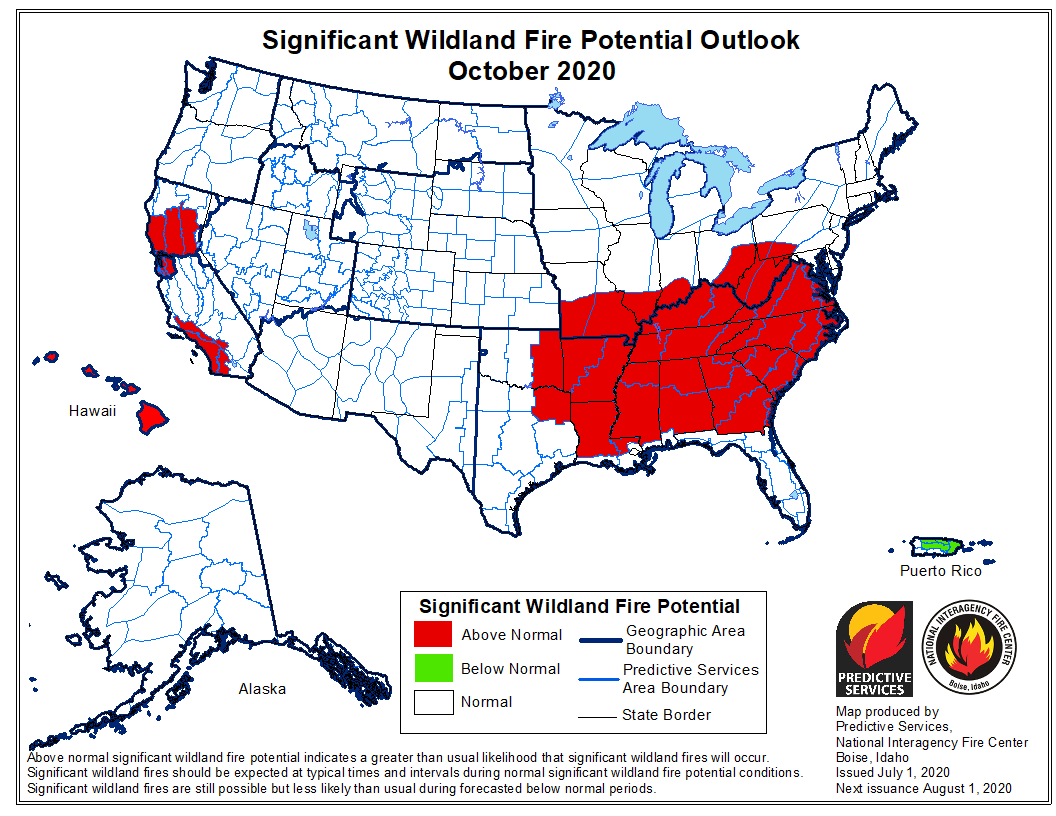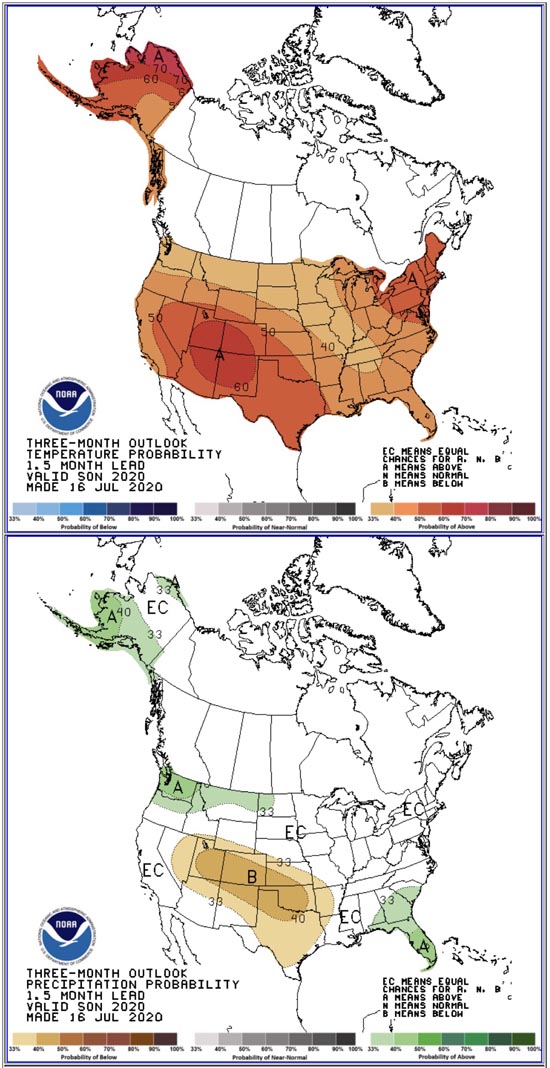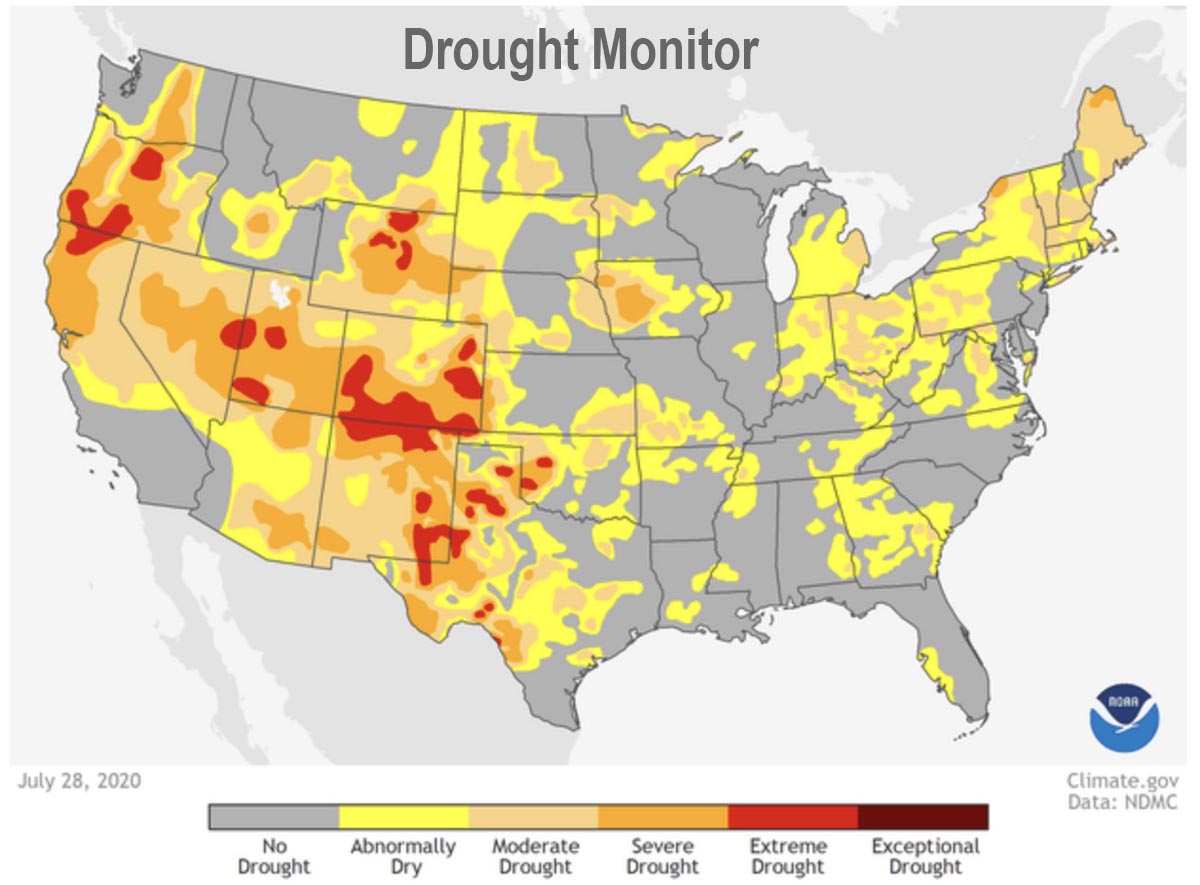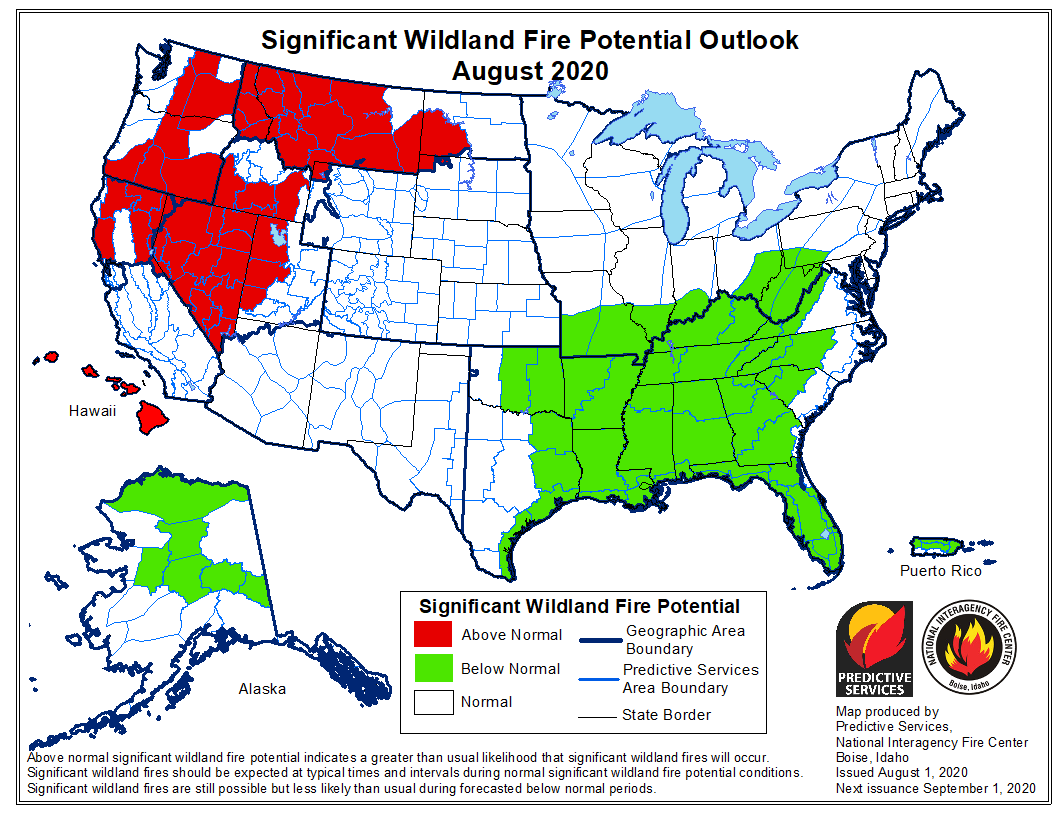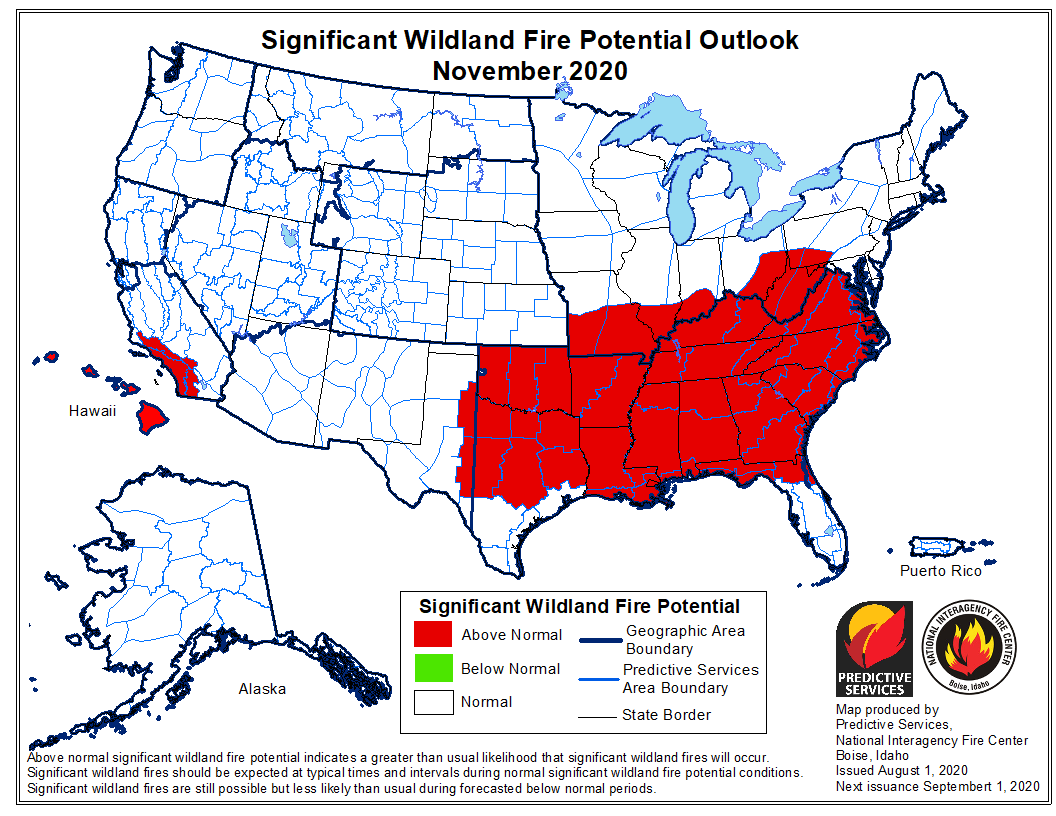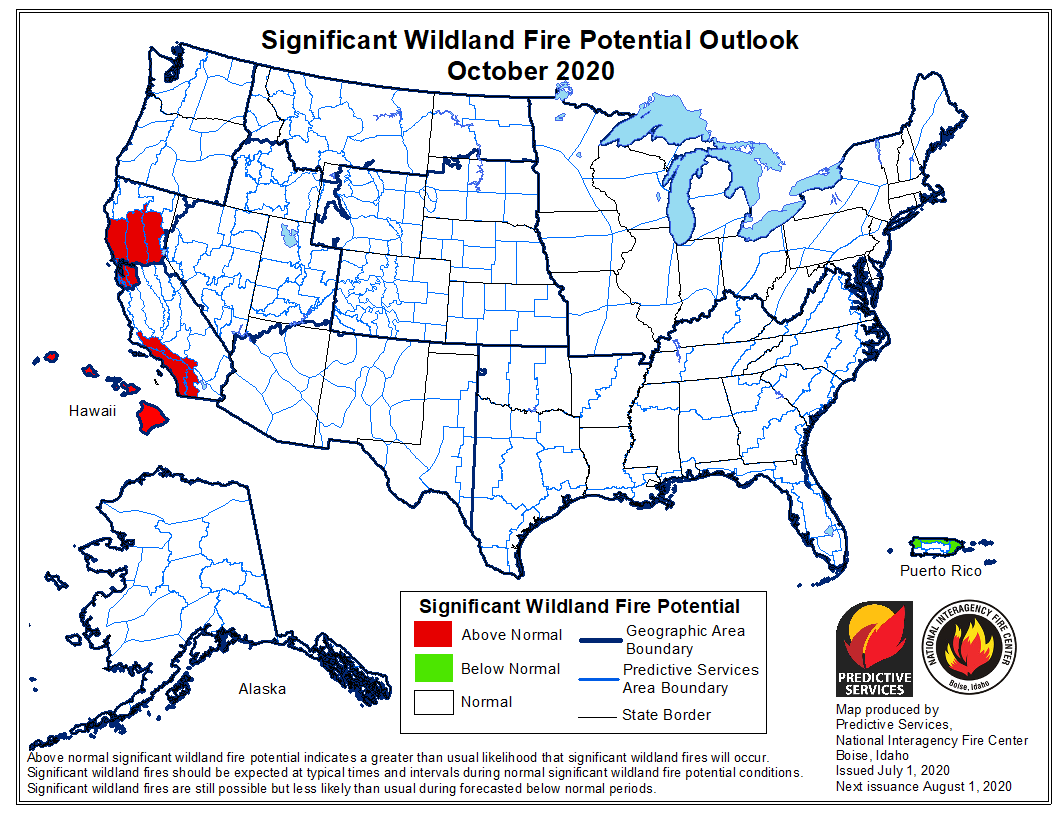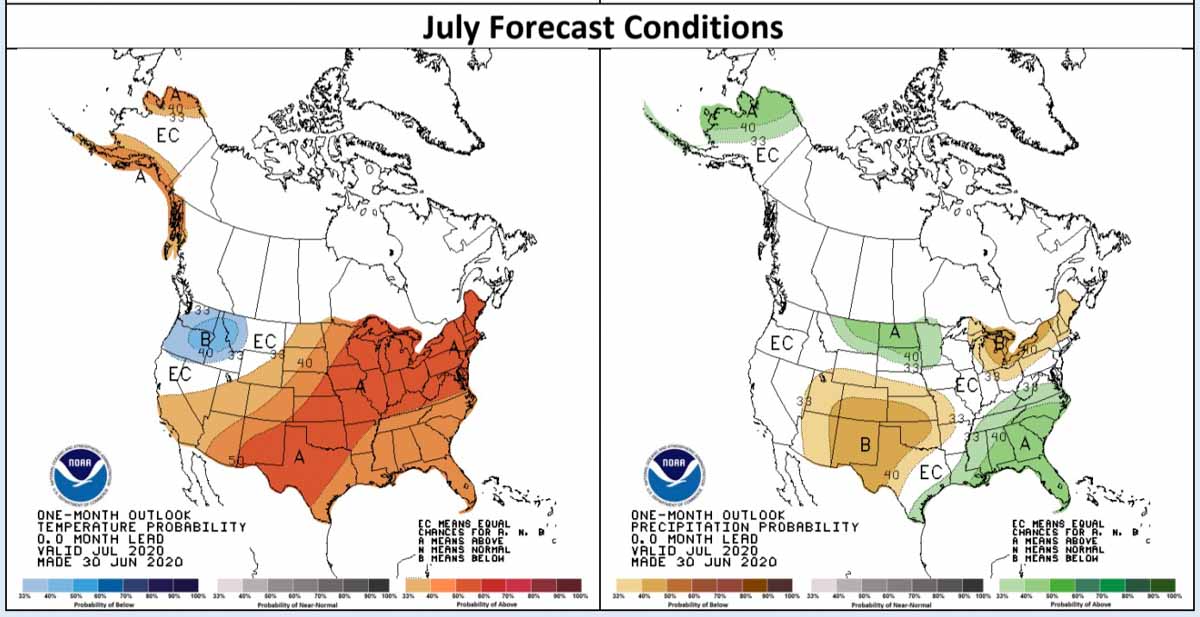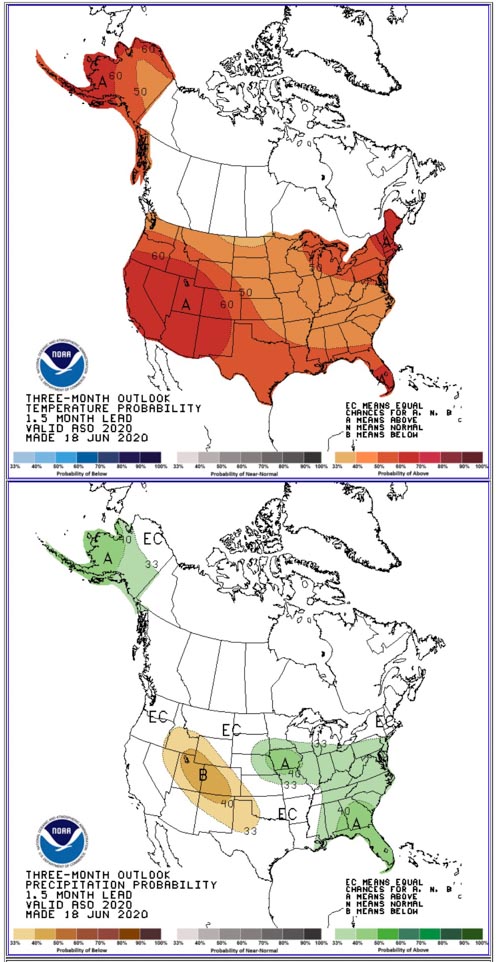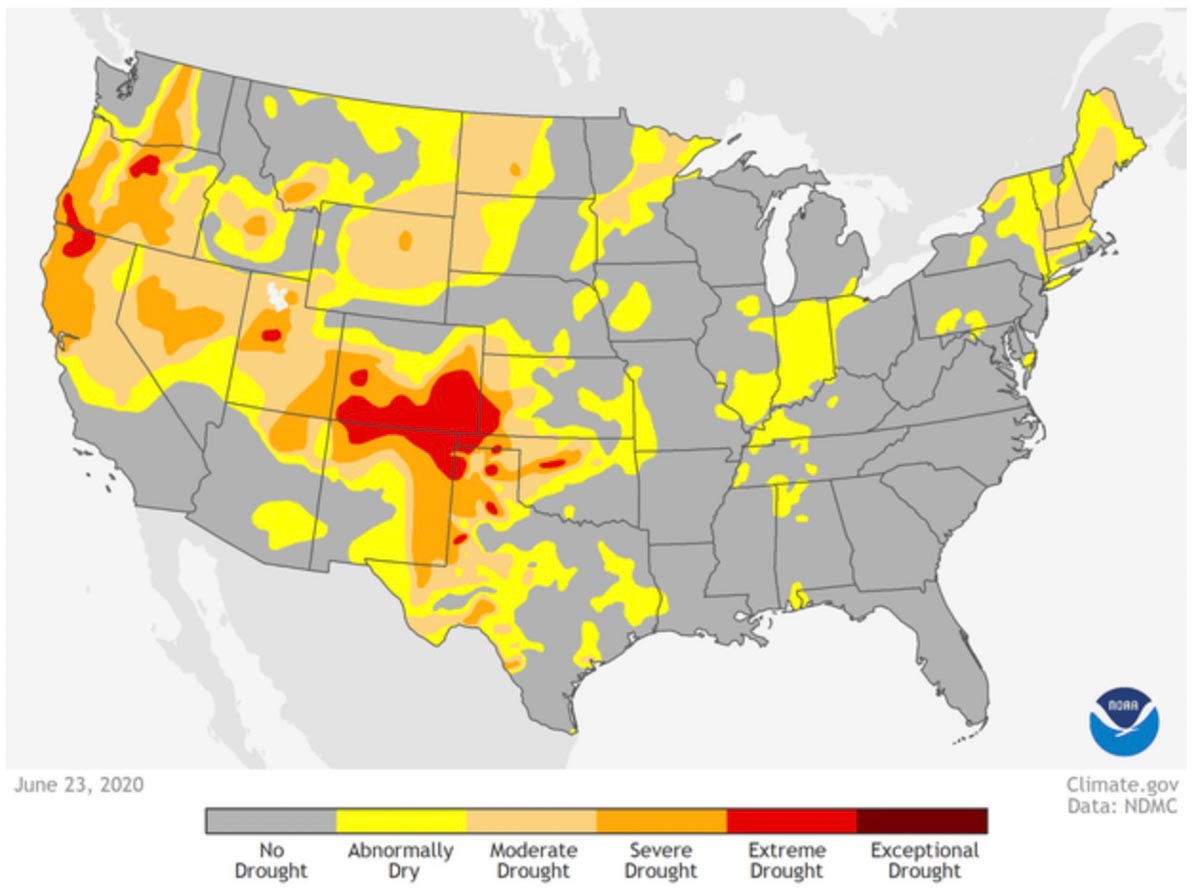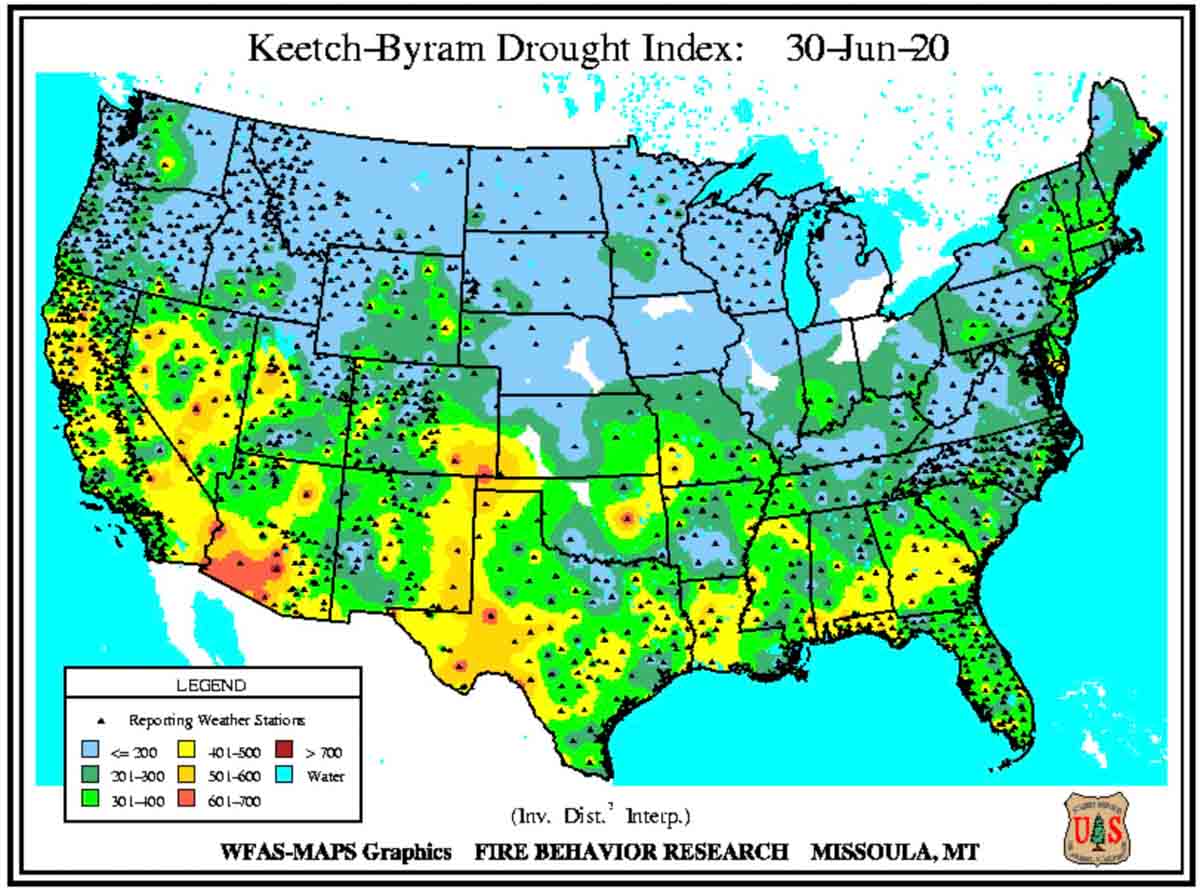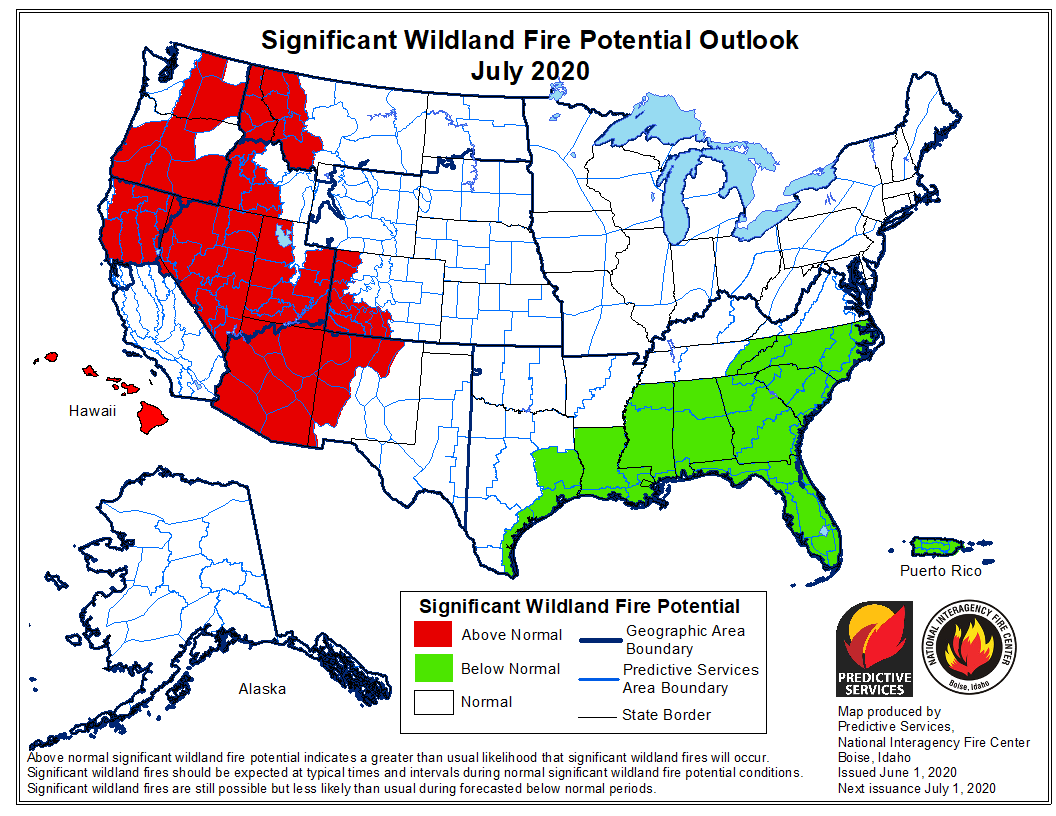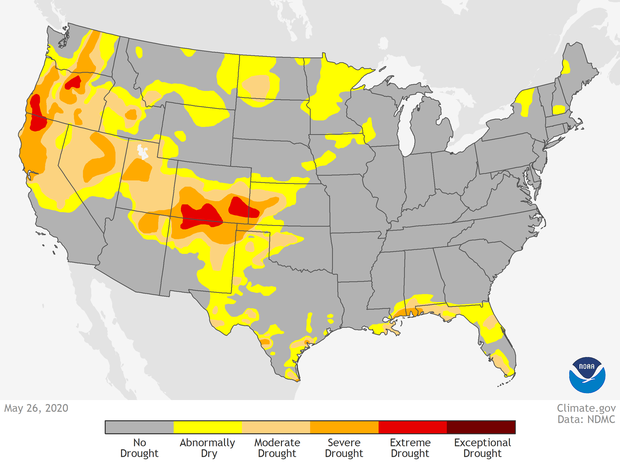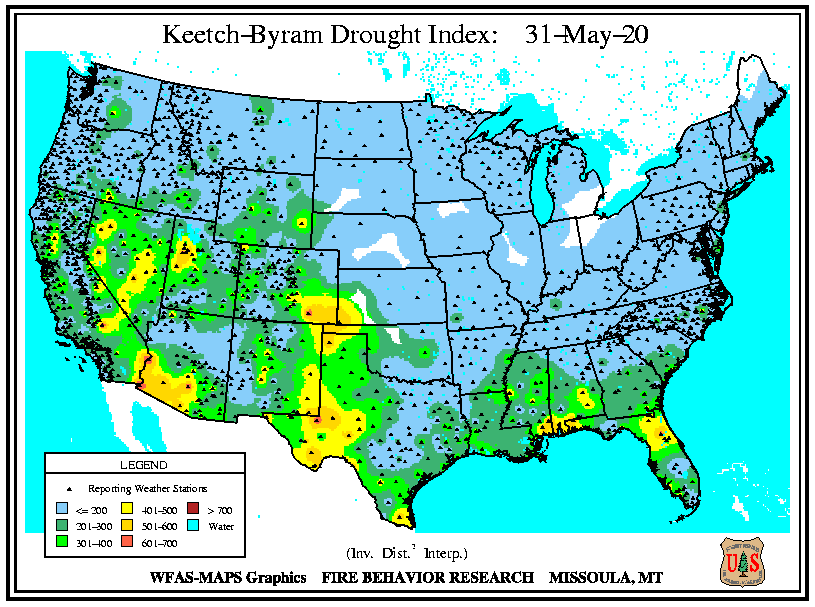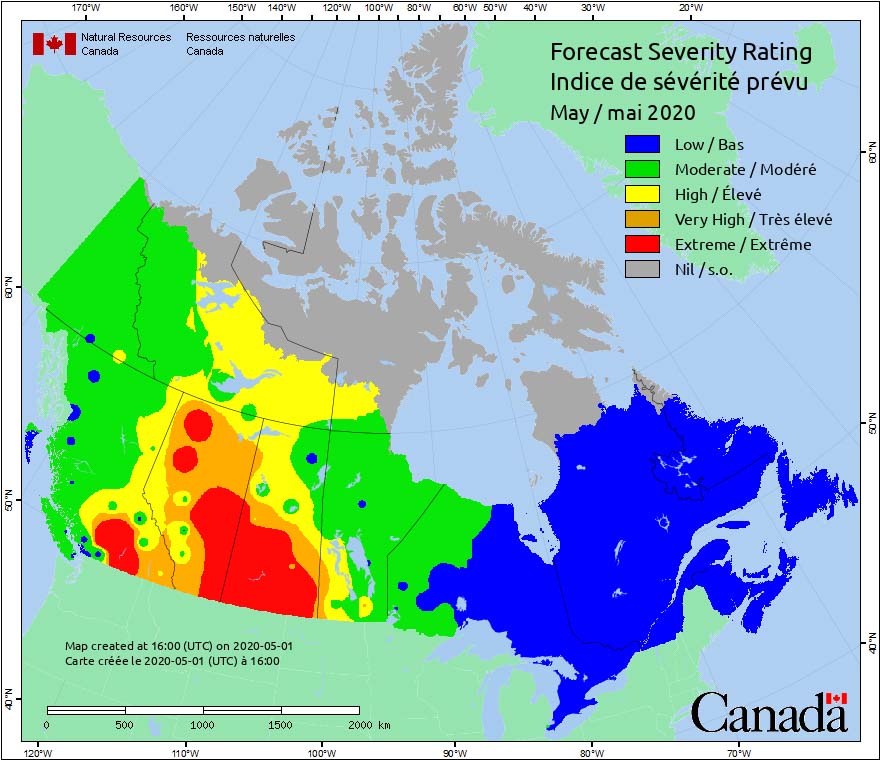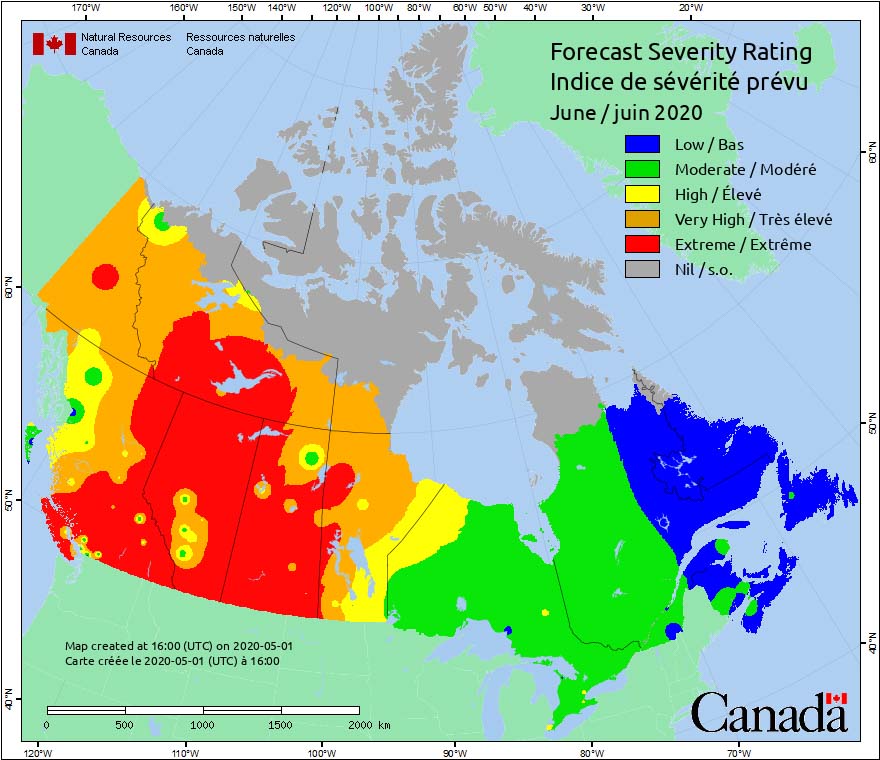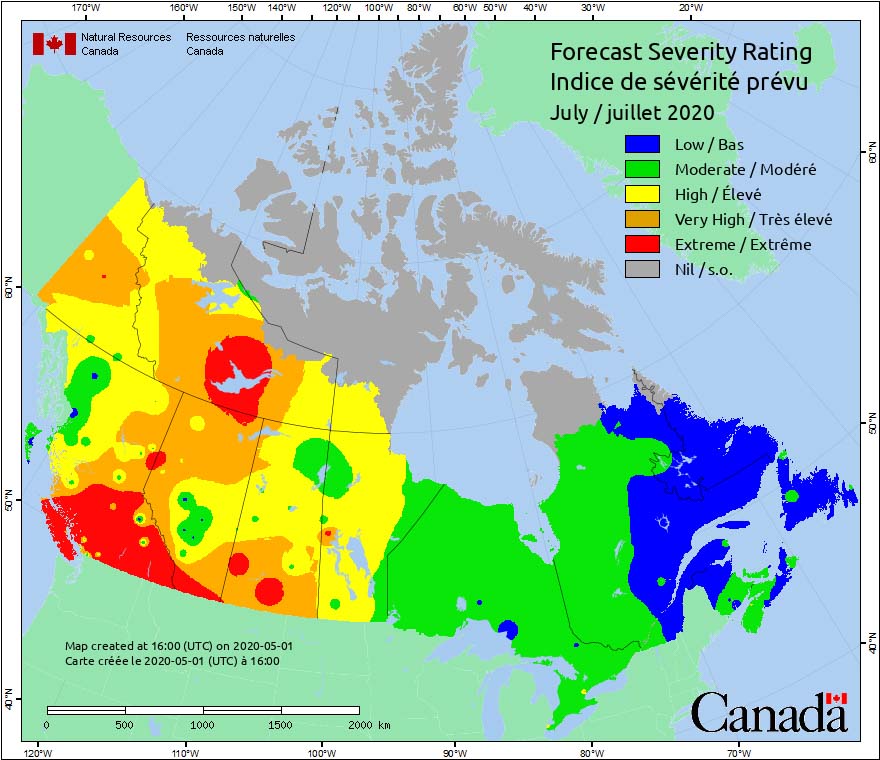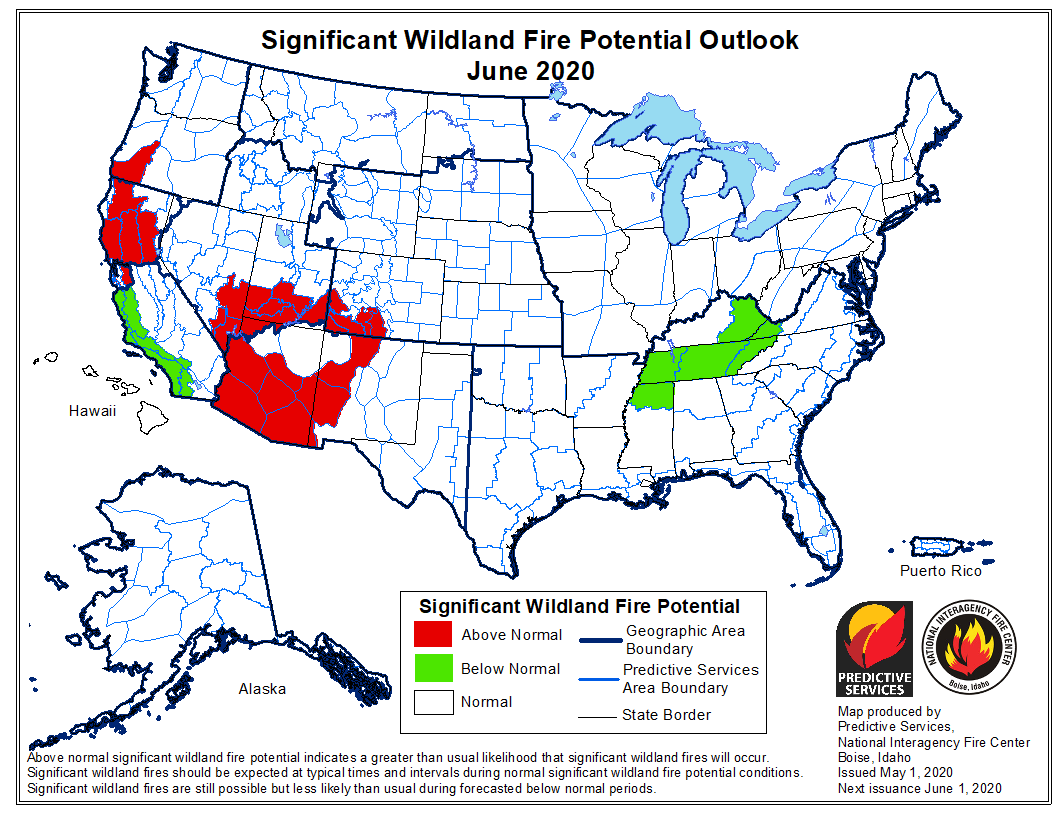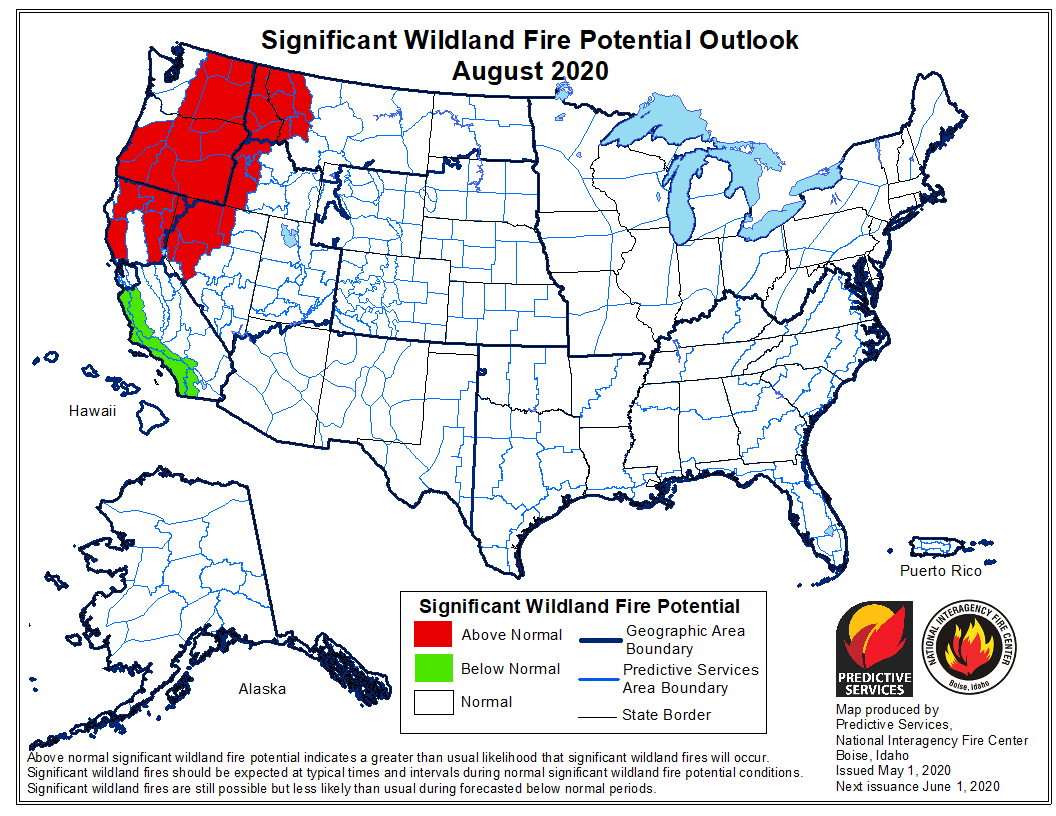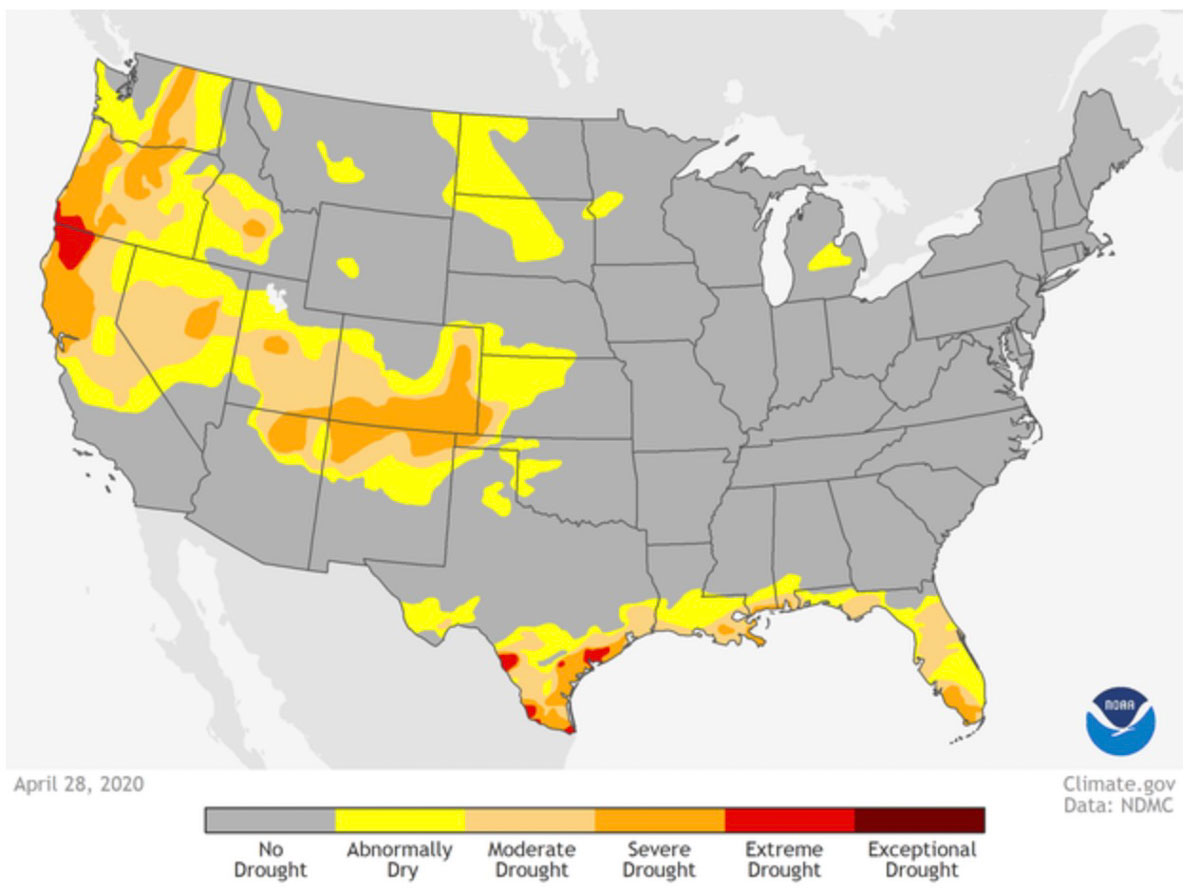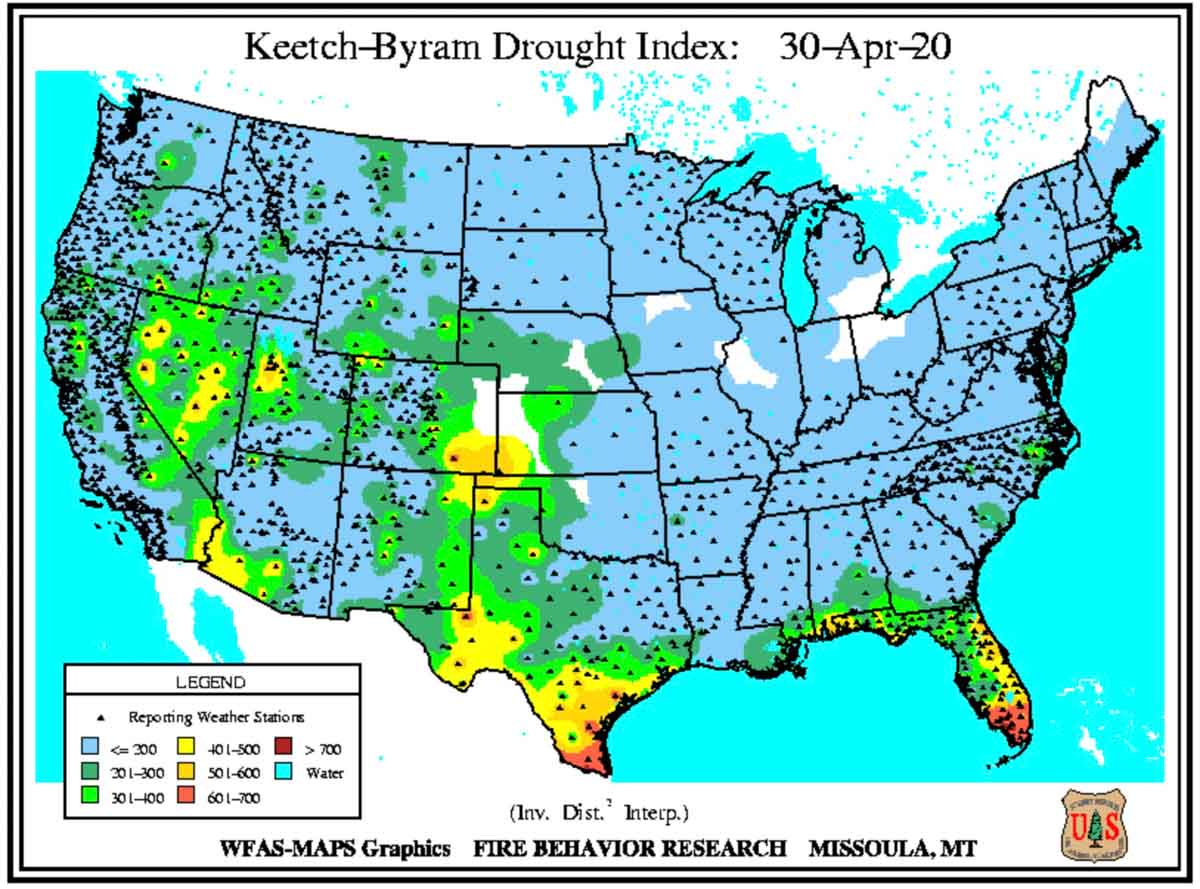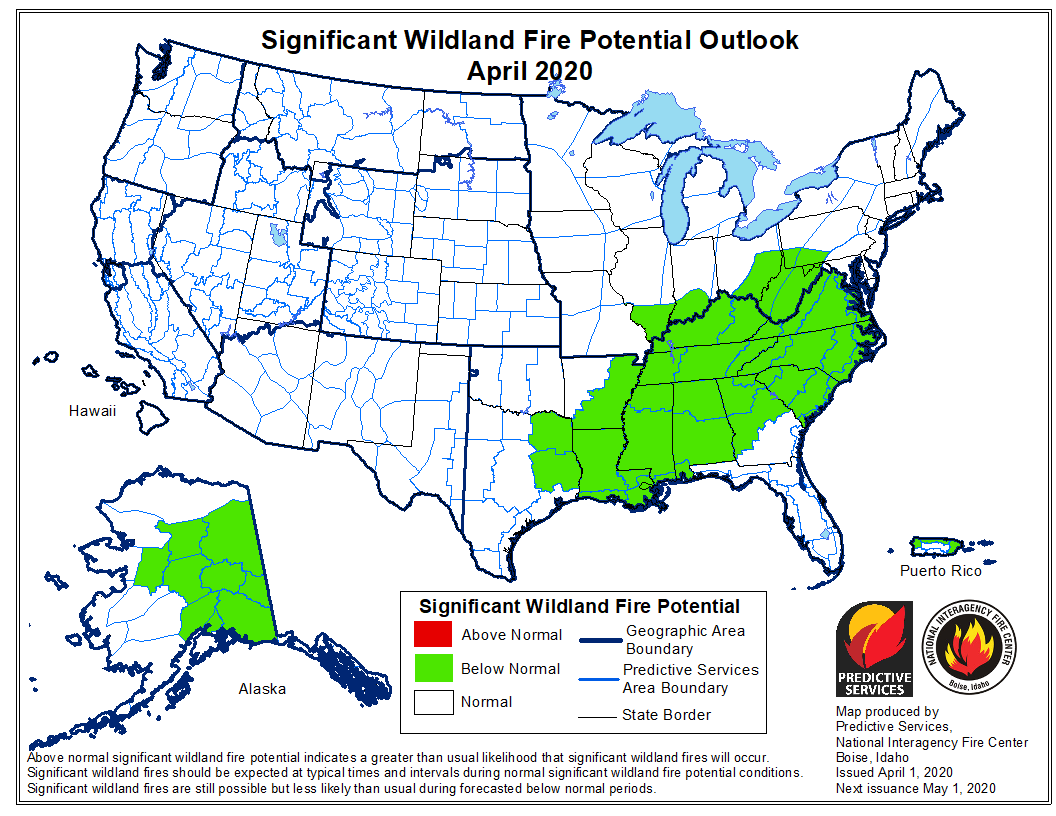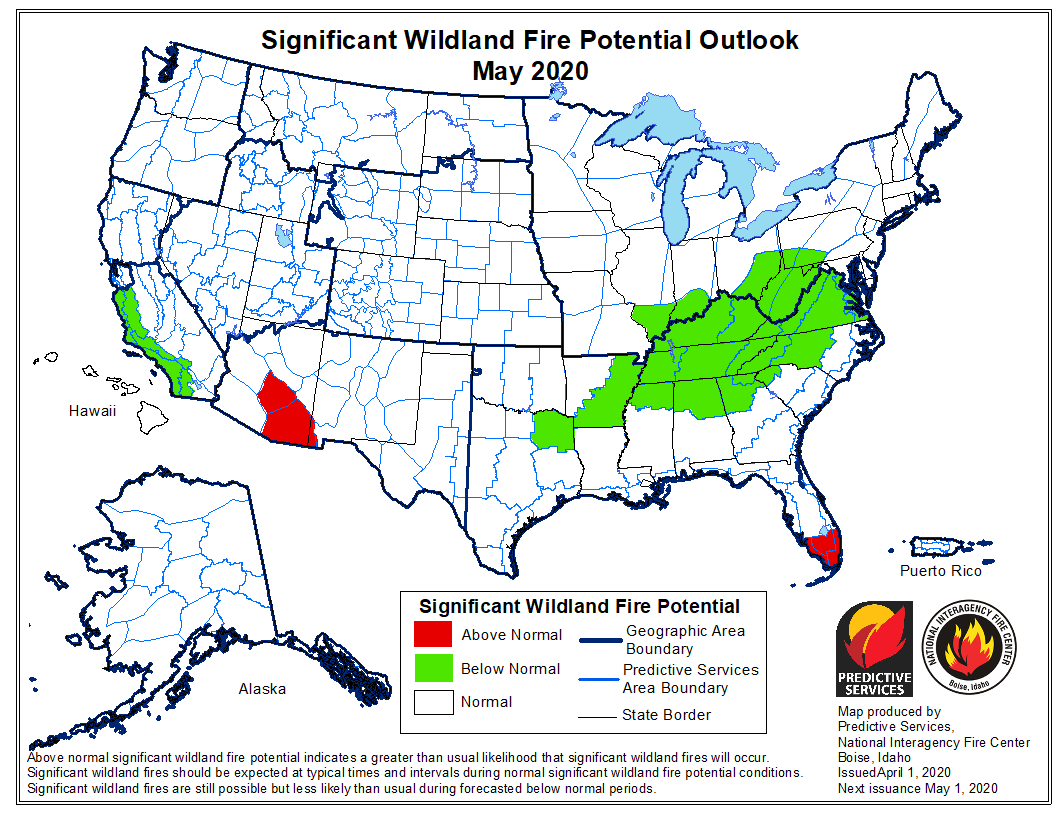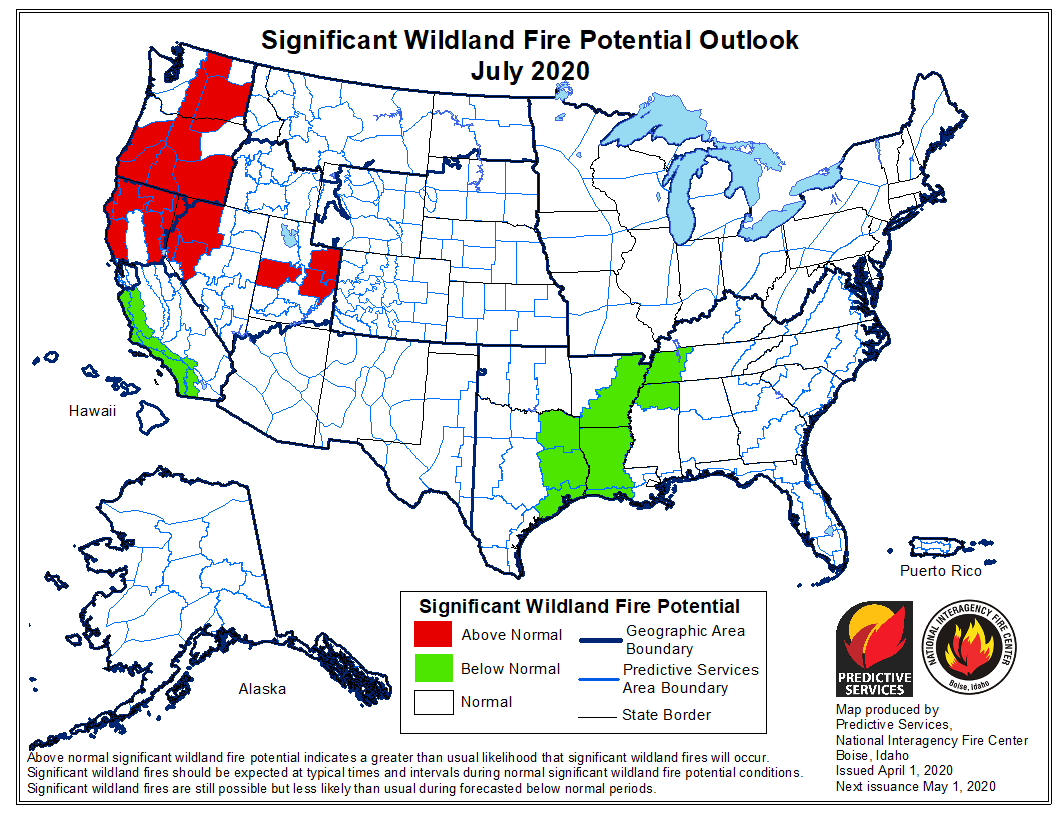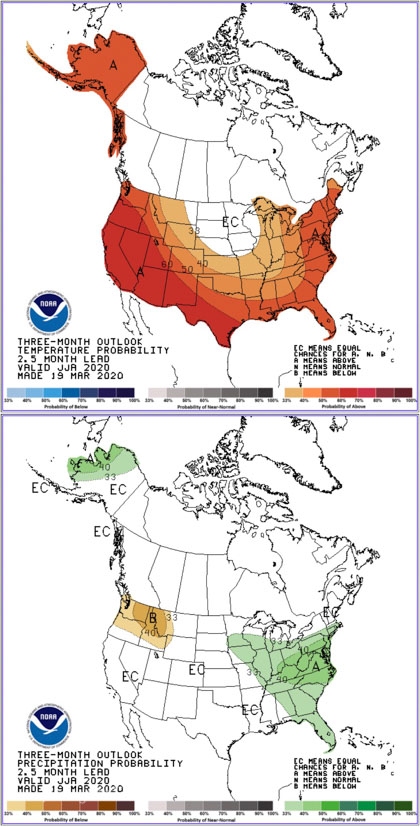The National Significant Wildland Fire Potential Outlook issued August 1 by the Predictive Services section at the National Interagency Fire Center for August through November predicts that the northwestern states will have above normal potential through September. In October and November that distinction shifts to California and the southeast.
The data from NIFC shown here represents the cumulative forecasts of the ten Geographic Area Predictive Services Units and the National Predictive Services Unit.
Below:
- An excerpt from the NIFC narrative report for the next several months;
- More of NIFC’s monthly graphical outlooks;
- NOAA’s three-month temperature and precipitation forecasts;
- Drought Monitor;
- Keetch-Byram Drought Index.
“August represents the peak of fire season for the West and Above Normal significant fire potential is expected across much of the Great Basin, northern California, Pacific Northwest, and northern Rockies. The North American Monsoon is forecast to remain intermittent, which will provide chances of lightning without moisture surges extending into portions of the Great Basin, California, Pacific Northwest, and northern Rockies. Given the dry fuels, any lightning will likely result in increased fire activity and above normal significant large fire potential into September.
“As precipitation and cooler temperatures arrive in fall, areas of concern will shift southward to portions of California as offshore wind events become more likely. Without a robust monsoon and potentially delayed fall precipitation, fuels will remain very dry across much of California. With ENSO-neutral to potentially La Niña conditions, an increase of frequency of offshore wind events are possible. Additionally, drier than normal conditions are likely across much of the Southern Area given current long-term weather and climatological trends. However, an active hurricane season is a source of uncertainty.”
